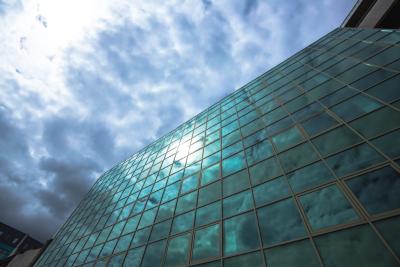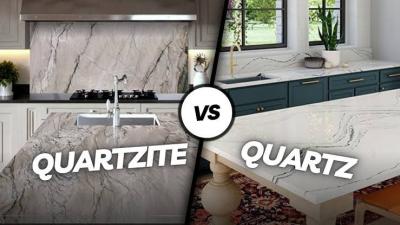
The winners of the second and final phase of Initiative 99, a global competition to design affordable housing that can be built for $99,000 or less, were announced today by ICON, a leader in 3D printing technology. In a major step forward for the future of affordable housing, two of the winning designs from the Professional category will be 3D-printed for a nonprofit community in Austin, Texas, dedicated to serving the area’s homeless population (as of 2023, it’s estimated to be around 4,600 people, according to recent data).

The top prize winners and honorable mentions of Phase I were subsequently invited to advance their designs within Phase II of Initiative 99. Phase II asked contestants to adapt their designs to site constraints and parameters for construction at Community First! Village. First, second, and third place winners have been awarded in both the open and student categories, as well as three honorable mentions per category. Two of the award-winning designs have also been selected for construction at Community First! Village and will be brought to life in part from grant funding from Wells Fargo. Construction is anticipated to break ground in early 2025.
A Global Effort with Local Impact
Launched earlier this year, Initiative 99 attracted submissions from over 60 countries, showcasing designs that addressed the pressing global need for affordable housing. ICON revealed the Phase 1 winners in March during a technology showcase at SXSW. Since then, the competition has moved to its final phase, with teams tailoring their designs to meet the specific needs of Community First! Village.

Winners in the Professional category include Guerin Glass Architects from the U.S., MTspace Studio from New Zealand, and Concave, a team with members from various locations. Notably, both Guerin Glass Architects and Concave have been selected to have their designs 3D-printed at Community First! Village. “ICON’s innovative 3D-printed technology paired with these beautiful, imaginative Initiative 99 designs can be a model for the future of safe, high quality, affordable housing,” said Darlene Goins, president of the Wells Fargo Foundation, whose foundation has committed $500,000 to help make these homes a reality through grant funding. “Wells Fargo is proud to help make these 3D-printed homes a reality at Community First! Village.”

“We are thrilled with the evolution of each team’s submission from Phase 1 to Phase 2 of the competition," said Melodie Yashar, ICON’s VP of Building Performance and Design. "We believe the designs generated by the competition introduce a wealth of ideas to advance progress on affordable housing worldwide.”

Expanding the Vision Beyond Austin
The impact of Initiative 99 extends beyond Austin, with winning designs also being incorporated into other forward-thinking projects. ICON has partnered with Liz Lambert to expand the iconic El Cosmico campground in Marfa, Texas, using winning designs from the competition. The project will feature new hotels, homes, and hospitality spaces over a newly designed 60-acre plot.
In addition to these high-profile projects, the winning designs from Initiative 99 will also be featured in ICON’s CODEX, a digital library of ready-to-print architectural plans. Builders, developers, and homeowners can access the designs to bring affordable, world-class architecture to life using 3D printing.

The News 20/09/2025
The construction industry is currently facing immense pressure to reduce carbon emissions, as concrete is not only one of the most widely used materials but also a major source of CO₂ due to its reliance on Portland cement. In response, Shimizu Corporation has conducted extensive research to develop sustainable material solutions aimed at achieving carbon neutrality. One of the most remarkable outcomes is carbon-negative concrete, which partially replaces cement and aggregates with biochar. This biochar is produced from sawdust through a carbonization process and has the unique ability to retain a significant amount of carbon that would otherwise be released into the atmosphere through natural decomposition or combustion. Thanks to this property, carbon-negative concrete not only maintains the necessary mechanical strength for construction but also directly contributes to reducing greenhouse gas emissions. This innovation is considered a promising step that opens new directions for the advancement of green construction in Japan and worldwide.

The News 13/09/2025
In the context of rapid urban development, the risk of fire in high-rise buildings, shopping malls, hospitals, and smart homes remains a serious threat. Traditional fire protection solutions are predominantly passive, focusing only on preventing flames from spreading and lacking sufficient early-warning capabilities. This limitation often results in delayed responses to fire incidents, leading to severe losses in both human life and property. Addressing this challenge, smart walls with integrated fire sensors have emerged as a breakthrough innovation, offering a proactive approach to building safety. Unlike conventional fire-resistant walls, these advanced walls not only provide thermal insulation and fire resistance but also integrate temperature, smoke, and pressure sensors combined with IoT technologies to continuously monitor environmental conditions. At the first signs of fire, the system can instantly detect anomalies, send alerts to a central control unit or mobile devices, and activate additional safety mechanisms such as water mist suppression or smoke extraction fans. By transforming passive barriers into “intelligent fire guardians,” this technology enhances building protection, increases the chances of timely evacuation, and minimizes potential damages. With its ability to turn ordinary walls into active safety components, smart fire-sensing walls represent a proactive solution that contributes significantly to the development of modern, sustainable, and resilient buildings.

The News 27/08/2025
In mass concrete construction, the heat of hydration has always been a “hidden variable” that troubles many engineers and contractors. When cement reacts with water, an enormous amount of heat is generated and trapped inside the massive concrete body. Without proper control, excessive temperatures and the temperature gradient between the core and the surface can cause dangerous thermal cracks, threatening both the durability and safety of the structure. This challenge is not just theoretical—it has been marked in history with a classic lesson: the Hoover Dam (USA), one of the greatest concrete megastructures of the 20th century. Containing millions of cubic meters of concrete, the dam would have taken hundreds of years to cool naturally. Engineers had to devise unprecedented solutions: segmenting the mass, actively cooling it through a network of circulating cold-water pipes, and applying a combination of innovative measures to bring the concrete temperature down to safe levels.

The News 22/08/2025
Have you ever wondered why modern buildings with large glass facades remain cool in the summer yet warm in the winter? The secret lies in Low-E (Low-Emissivity) glass technology. In contemporary construction, glass is no longer just a material for natural lighting but also an essential solution for enhancing a building’s energy efficiency. Low-E glass is coated with an ultra-thin, nearly invisible layer of metal oxide that works “intelligently” to control heat radiation. It allows natural daylight to enter while blocking most infrared and ultraviolet rays that cause heat buildup and potential health risks. Thanks to these properties, this advanced glass not only creates a more comfortable living environment but also significantly reduces heating and cooling costs, while contributing to sustainability and environmental friendliness in modern architecture.

The News 15/08/2025
In the world of natural stone, quartz and quartzite are two names that are often confused—not only because their names sound similar, but also because their appearance shares many similarities. However, they are entirely different materials in terms of origin, structure, and performance characteristics. Quartz is typically an engineered stone, created by combining crushed quartz crystals with resin and additives, while quartzite is a natural stone formed through the metamorphism of quartz-rich sandstone. This difference not only impacts the value of the material but also determines its durability, heat resistance, and suitability for various applications. Understanding how to distinguish between quartz and quartzite will help you choose the right stone for your needs, avoid mistakes, and make the most of your investment.

The News 07/08/2025
In areas with high slip risk—such as bathrooms, swimming pools, public lobbies, or sloped surfaces—selecting tiles with adequate slip resistance is essential. To accurately assess this property, there are currently four widely used testing methods, each aligned with different international standards and suited to specific applications. This article will help you understand each method, how to interpret the results, and how to apply them effectively in real-world scenarios.